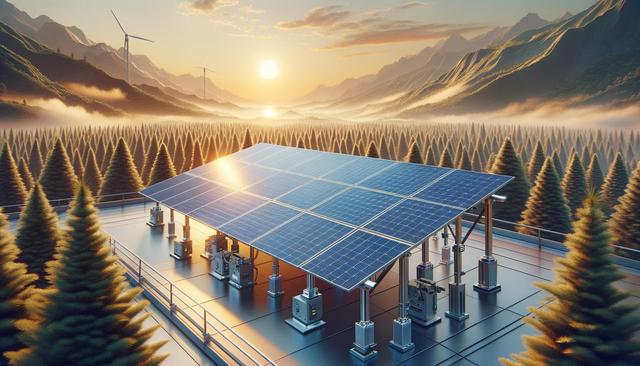Understanding the Role of Mounting Systems in Solar PV Installations
Solar photovoltaic (PV) mounting systems are a critical part of any solar energy setup, as they provide the structural support required to hold solar panels in place. These systems play a significant role in achieving the correct tilt and orientation for maximum sunlight exposure, directly influencing the efficiency of solar energy capture. Without a reliable mounting system, even high-efficiency solar panels cannot perform to their full potential. The type of mounting used often depends on several factors, including the installation site, local climate, space constraints, and the intended energy output goals.
Mounting systems are designed to withstand various environmental stressors such as wind, snow, and seismic activity. Engineers consider these factors when selecting materials and designing the structure. Most systems are made from corrosion-resistant materials like aluminum or stainless steel, ensuring long-term durability. As solar projects become more widespread across residential, commercial, and utility-scale sectors, the importance of choosing the right mounting system continues to grow.
Types of Solar PV Mounting Systems
Solar PV mounting systems come in several configurations, each suited to different applications and environmental conditions. The most common types include:
- Roof-Mounted Systems: These are installed on residential or commercial rooftops and can be either fixed-tilt or adjustable. They are ideal for properties with limited ground space.
- Ground-Mounted Systems: Installed directly on the ground, these systems offer greater flexibility in orientation and tilt. They are commonly used in large-scale solar farms.
- Pole-Mounted Systems: These allow for a single or dual-axis tracking mechanism, enabling the panels to follow the sun’s path and maximize energy generation.
- Ballasted Mounts: Often used on flat roofs, these systems use weight (typically concrete blocks) to keep the panels in place without penetrating the roof surface.
Each type has its advantages and drawbacks, depending on factors such as cost, space availability, and energy needs. Understanding these differences is essential when planning a solar installation.
Installation Considerations and Site Assessment
Proper installation of solar PV mounting systems begins with a thorough site assessment. This process evaluates the location’s solar exposure, roof or ground conditions, shading elements, and potential obstructions. Structural integrity is a key consideration, particularly for rooftop installations. Installers must ensure that the roof can support the additional load of the solar system, including the panels, mounting hardware, and potential snow or wind loads.
Key aspects of the site assessment include:
- Roof orientation and pitch
- Available surface area
- Shading analysis throughout the year
- Soil conditions for ground mounts
- Accessibility for maintenance and cleaning
After the assessment, the appropriate mounting type and configuration are selected. The system is then securely anchored using bolts, brackets, or ballast, depending on the design. Proper alignment and spacing between panels are critical to avoid shading and ensure optimal system performance over time.
Benefits of Quality Mounting Systems
Investing in a high-quality solar PV mounting system can offer several long-term benefits. One of the most important is system longevity. A durable mounting structure helps ensure that the solar panels remain securely in place for decades with minimal maintenance. This is vital for maximizing the return on investment in solar technology.
Other advantages include:
- Improved energy yield due to optimal panel positioning
- Reduced risk of damage from weather-related events
- Lower operational and maintenance costs over time
- Enhanced aesthetic integration in residential applications
In addition, well-designed mounting systems can simplify the installation process and reduce labor time, which can help keep project costs in check. As solar panel efficiency continues to improve, the role of the mounting system in supporting overall performance becomes even more crucial.
Trends and Innovations in Mounting Technology
The solar industry is constantly evolving, and mounting systems are no exception. Recent innovations focus on simplifying installation, improving adjustability, and incorporating tracking technologies. Solar tracking systems, for instance, allow panels to follow the sun’s movement throughout the day, increasing energy production by up to 25% compared to fixed-tilt systems. While more expensive, these systems are becoming more accessible as technology advances and costs decrease.
Other emerging trends include:
- Use of lightweight materials to reduce structural load
- Pre-assembled components for faster installations
- Integration with green roofing systems
- Modular designs that allow for easy system expansion
Sustainability in mounting systems is also gaining attention. Manufacturers are exploring recyclable materials and low-impact installation methods to reduce the environmental footprint of solar projects. As demand for renewable energy continues to grow, mounting systems will play a pivotal role in enabling efficient and scalable solar solutions.
Conclusion
For homeowners, businesses, and solar developers alike, understanding solar PV mounting systems is key to successful solar energy adoption. These systems are more than just structural components—they directly influence the performance, safety, and longevity of a solar installation. With various types available and ongoing innovations shaping the industry, selecting the right mounting solution requires careful consideration of site conditions, energy goals, and budget. By investing in a reliable mounting system, users can ensure their solar panels deliver consistent, long-term energy savings while contributing to a more sustainable future.




Leave a Reply